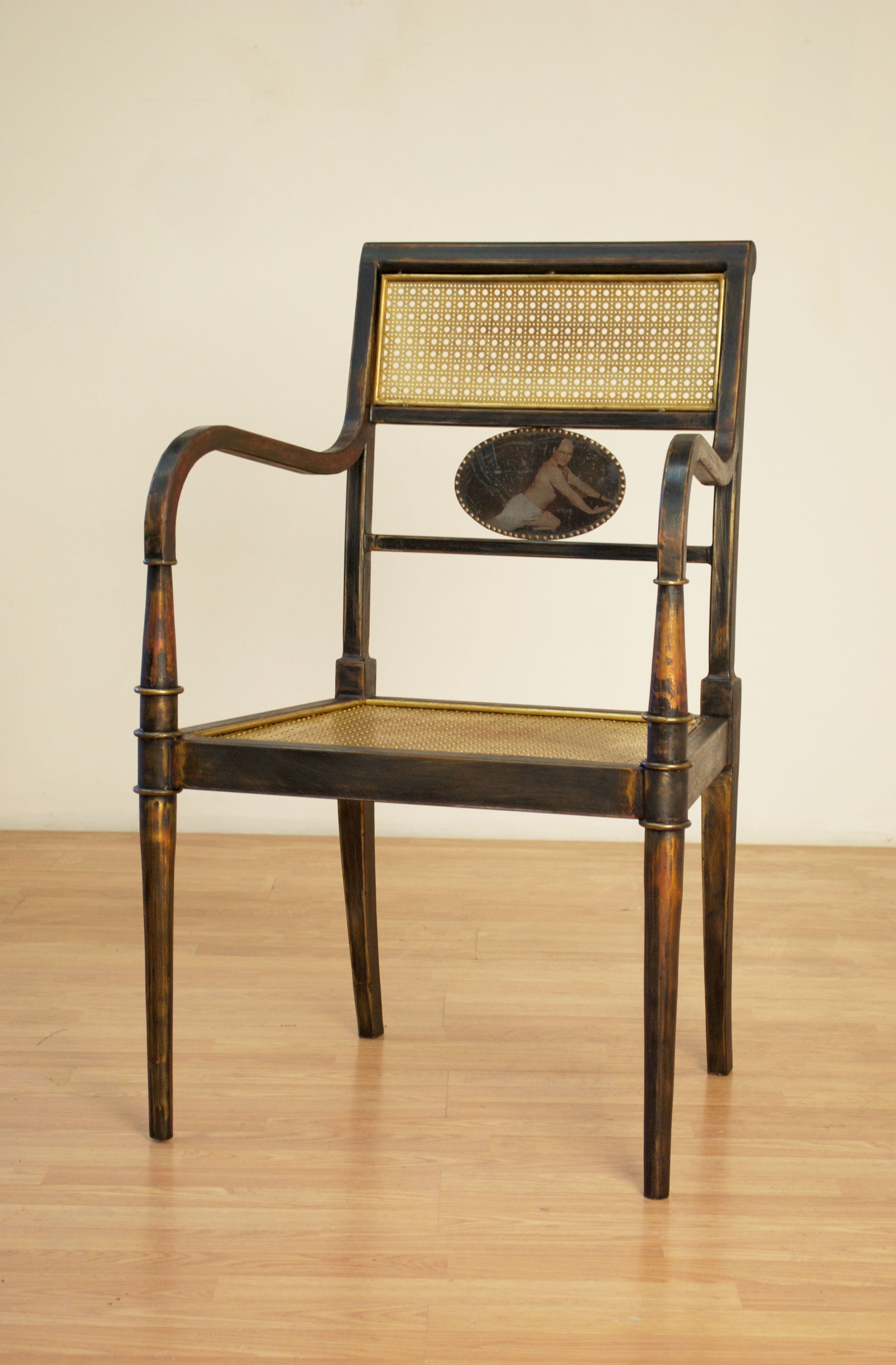Sophie Glenn makes steel look like wood in her beguiling furniture.
Sophie Glenn’s furniture is not what it seems. Made of painted and rusted steel, her work borrows from classic furniture forms while eliminating wood entirely. It demands close examination. In one chair, Black Sheep, she replaced a woven fabric seat with woven steel wool. In another, she embedded a photo transfer of the Seinfeld character George Costanza into a bronze lattice chairback. Born and raised in New York City, Glenn first worked with wood and metal in college. “I really loved making things with my hands, and especially creating useful objects from raw materials,” she says. Currently based in Reading, Pennsylvania, she teaches regularly at craft schools around the country. She is the 2022 recipient of the John D. Mineck Fellowship, given by the Society of Arts + Crafts to an exemplary early-career furniture maker. Read about her playful amoeba keepsake boxes in “To Have and To Hold” in the Fall 2023 issue of American Craft.

Gorgeous George, 2019, painted and rusted steel, silicon bronze, and image transfer, 37 x 23 x 18 in., is a part of Glenn’s series Rust Never Sleeps.











